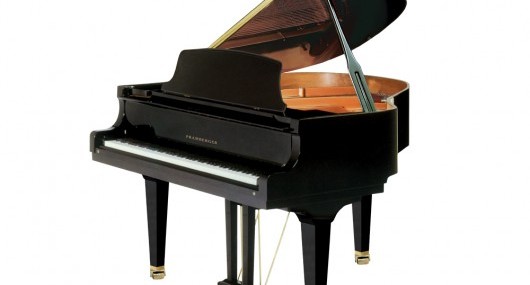1. The piano is known as the King of instruments for a variety of reasons. First, it’s the only instrument that covers the full spectrum of any instrument in the orchestra, from the lowest notes of the double bassoon to the highest notes of the piccolo. Next, it has the ability to play both the melody and the accompaniment at the same time. Finally, it’s the largest musical instrument (excluding the pipe organ) and most versatile in creating music.
 2. One of the most famous pianos is a Steinway. Steinway & Sons was started in 1853 by Engelhard Steinweg and his three sons – who later Americanized his name to Henry Steinway as a way to compete in the American marketplace. There are currently six Steinways in the Smithsonian collection.
2. One of the most famous pianos is a Steinway. Steinway & Sons was started in 1853 by Engelhard Steinweg and his three sons – who later Americanized his name to Henry Steinway as a way to compete in the American marketplace. There are currently six Steinways in the Smithsonian collection.
3. The average medium size piano has around 230 strings, with each string having about 165 pounds of tension. That means when you add up all the strings, the combined pull of the strings would equal around 18 tons. (If you add up the string tension in a concert grand piano, it would be closer to 30 tons.)
4. The term “tickle the ivories” refers to playing the ivory keys of the piano. However, piano keys have not been made out of ivory since the 1950’s, and today are made out of plastic.
5. During the past 100 years, over 5,000 brands of pianos have been available in the marketplace. And because of their longevity, most of these brands are still on display in homes, museums, or other locations throughout the world.
6. The first practical piano with a hammer mechanism and the capability of being played softly and loudly was built in 1700 in Italy by Martolomeo Cristofori. Cristofori never focused on the piano, instead preferring to put his attention on building harpsichords. His original name was “gravicembalo col piano e forte”, or harpsichord loud and soft. It was later shortened to “pianoforte”, and finally piano.
7. The term grand piano was first used in 1777.
8. A grand piano action is faster than a vertical (spinet, upright or console) because it has a repetition lever, which allows the pianist to repeat a note when its only half way up. A vertical action requires letting the key return all the way up before the hammer action can be reset again.
9. The worlds largest piano in a Challen Concert Grand. Its 11 feet long, has a total string tension of over 30 tons and weighs more than a ton.
10. A typical keyboard has 88 notes, with the first note being A and the last note being C. The exact middle of the keyboard is not middle C. Instead, it’s the space between E and F above the middle C.
11. Although a piano is a string instrument, the are considered percussion instruments and are placed in that section of a symphony orchestra.
12. A new piano should be tuned four times a year, with a shift to twice per year after that.
Learn more about Memphis Pianos.


